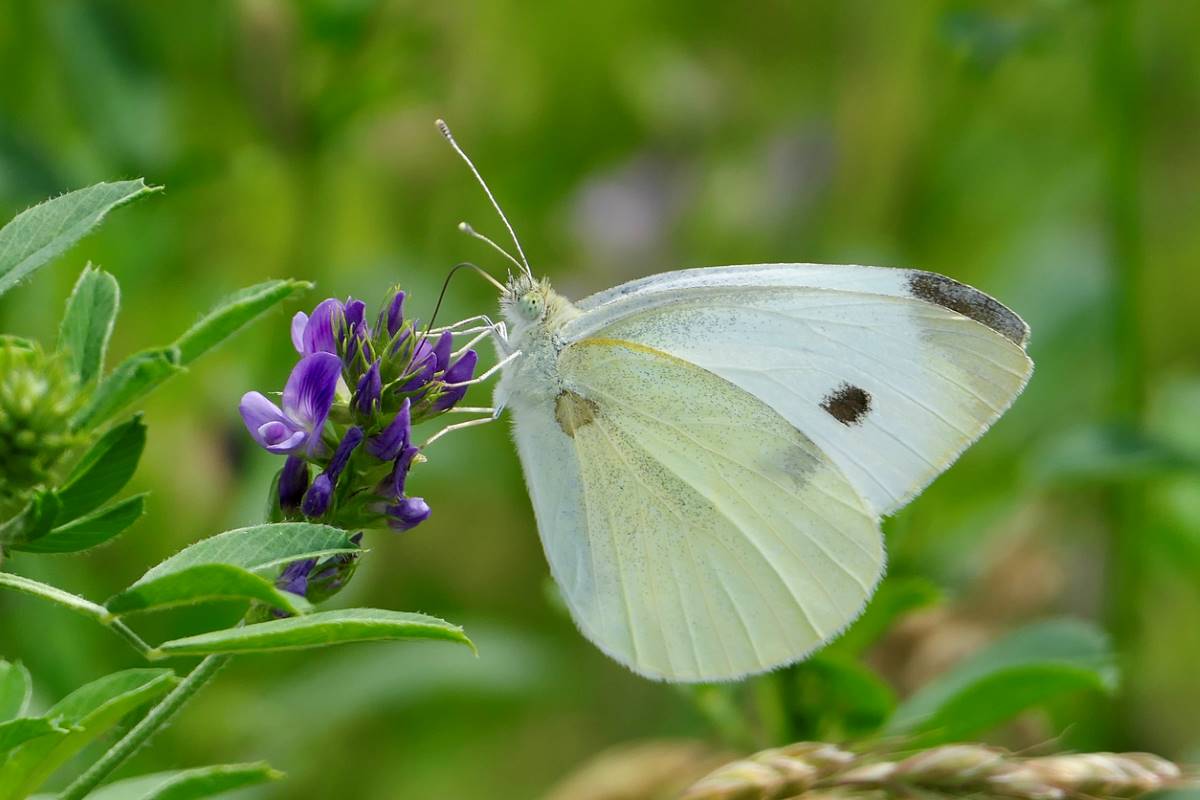Cabbage moth: an insect that causes damage
It is especially harmful to cabbages but also to turnips, nasturtiums and more rarely to red cabbage, radishes and mignonette. The leaves are first superficially eaten away by the young caterpillars which, during their growth, cut deeper into the blade to transform it into lace, leaving only the large veins.
The Cabbage Pigeon Lifestyle
It is in the form of a chrysalis that this insect spends the winter. In may, the adults (the well-known “white butterflies”) appear and, after mating, the female lays packets of lemon-yellow eggs on the underside of the leaves. When hatching, the caterpillars remain grouped together and only eat the epidermis; then, later, they disperse and attack deeper.

In June, after having fed abundantly, the caterpillar, which reaches 5 cm in length, transforms into a chrysalis. It then transforms into a butterfly which will give rise to a new generation. In the South, three generations can thus develop.
How to detect and monitor cabbage moth?
Detection and monitoring of cabbage moth are essential to intervene at the right time and limit damage. There are several methods to spot the presence of this insect, such as:
- Observe the flight of adult butterflieswhich are attracted to yellow or white flowers, such as rapeseed or mustard;
- Regularly examine the underside of the leaveswhere the eggs and young caterpillars are found;
- Use pheromone traps, which attract and capture male cabbage moths, thus making it possible to assess the risk of infestation;
- Use insect netswhich protect crops while allowing light and air to pass through.
How to get rid of it?
It is mainly directed against young caterpillars. In the garden, you can practice weeding and the destruction of clutches by monitoring the underside of the leaves.
However, if the outbreak is significant, treatments with insecticides such as synthetic pyrethroids or preparations based on Bacillus thuringiensis are effective.

